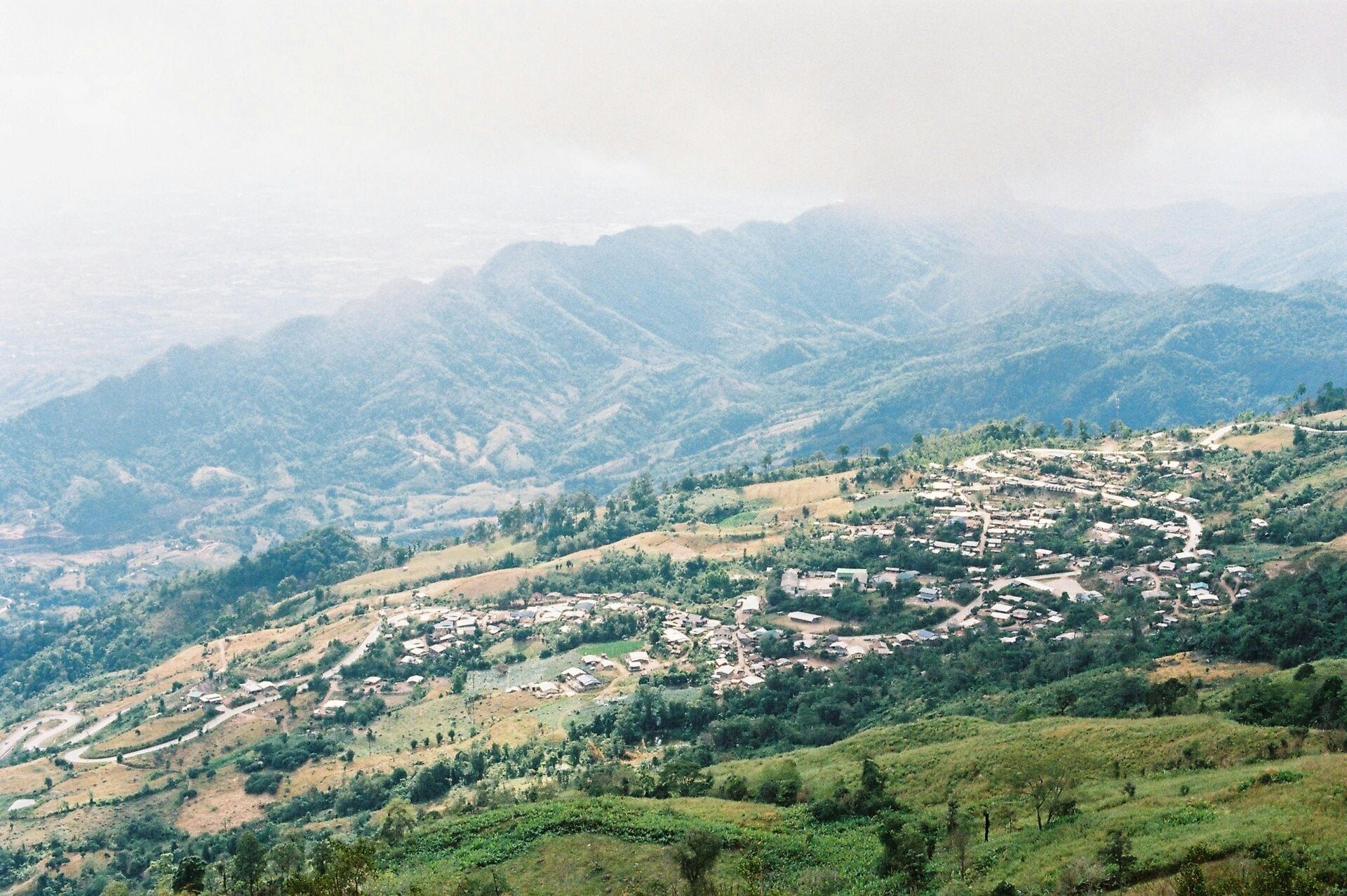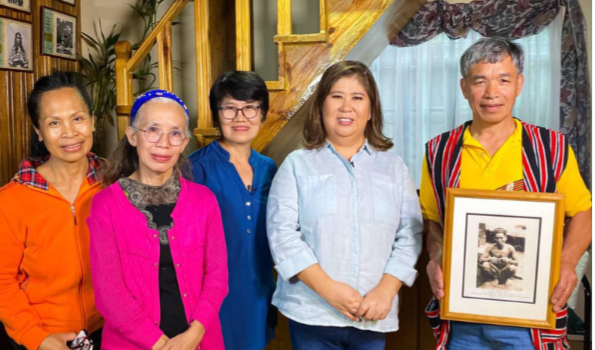
MAURA FROM MANKAYAN
In 1904, the St. Louis World’s Fair—the Louisiana Purchase Exposition—set out to dazzle visitors with its scale and vision of progress. Among its many attractions was the “Philippine Exhibit,” which included a reconstructed “Igorrote Village” where 47 acres were fashioned into replica villages designed to exhibit the cultures of America’s new colonial subjects, which included the Igorots of the Cordilleras. Among the 1,200 Filipinos shipped from the archipelago was Maura from Suyoc. She and the other Igorot travelers were on displayed like museum objects—labeled as “headhunters,” “primitive,” and “dog-eaters.” Maura unfortunately fell ill, died, and her body was unknowingly used for a "scientific" endeavor. Below is a summary of her story from the investigative illustrated video by the Washington Post called, "Searching for Maura" and details from other articles.
When they reached Tacoma, Washington, local crowds gathered to stare at them. From there, they boarded a train eastward through America on a five day journey into the heartland of the United States. It was a difficult one because of the conditions of the train. Reports described unbearable heat, shattered windows, and passengers stripping off their clothes from suffocation. Later, they braved freezing temperatures. Newspapers mocked their discomfort, using cruel language. Within days of arriving in St. Louis, two men, including one named Ibag, died of pneumonia. Maura herself was rushed to Mullanphy Hospital, where snow began to fall—an eerie rarity for April.⁴
As construction crews built mock Filipino villages for the fairgrounds, the Filipinos were expected to perform daily tasks as if they were living back home. Maura and her companions demonstrated mining techniques and endured twisting rare traditions into a daily show. People called them “savages,” despite their protests.⁴

(Illustration by Ren Galeno for The Washington Post)³
Maura never got to see the fair open. She was hospitalized for pneumonia, and died before the fair opened to the public, shortly after snowfall blanketed the city—an unusual sight for April. Her final wish was to be buried back in the Philippines, a request relayed by Truman Hunt. Her tribe mourned deeply, forming a circle around her body. Unbeknownst to her tribespeople, a scientist named Aleš Hrdlička from the Smithsonian performed an autopsy and took part of her brain (cerebellum) as part of a broader project to build a “racial brain collection,” in an attempt to prove white supremacy through pseudo-anatomical research, which is now debunked.⁴
Over the following decades, the collection grew to include hundreds of brains from marginalized groups, including 27 Filipinos. Some came via U.S. military autopsies in the Philippines; where most were taken without consent. Records show that Maura’s cerebellum was likely cremated, though no burial site was documented.⁴

Descendants of Buli-e
In 2021, as snow again fell in St. Louis, artist and activist Janna Añonuevo Langholz discovered Maura’s name in the archives. She uncovered Maura’s story buried in dusty archives and newspapers. Inspired, Janna built a website documenting lives lost at the World's Fair. She led tours, placed headstones on forgotten graves, and searched for Maura’s resting place. Born on the same grounds where Maura had once stood, Janna launched a project to document the lives and deaths of Filipinos at the fair. Her investigations uncovered records pointing to Maura’s body being repatriated to the Philippines, years before this was publicly known.⁴
Janna journeyed to Suyoc speaking with community elders, to honor Maura at the overlook and began collaborating on a memorial. Meanwhile, she continues advocacy to reclaim the remains of others—including three additional Filipinos whose brains are still held at the Smithsonian. In August 2023, under mounting scrutiny, Smithsonian Secretary Lonnie G. Bunch III formally apologized for the institution’s unethical practices and began the slow work of repatriating human remains, yet over 250 brains remain in storage.⁴
In 2023, The Washington Post launched a year-long investigation into the Smithsonian Institution’s “racial brain collection”, the archive of human remains gathered under the guise of science. At the heart of this project was the story of Maura.³
"Searching for Maura" highlights the discovery of her journey and eventual return to Suyoc,
covering briefly the hopes to rectify the actions of Researchers of the past. See the video below:
The following are the names of Filipinos and Filipino Americans who were part of the investigative series³:
Freelance contractors
1. Ren Galeno – Illustrations for “Searching for Maura”
2. Christian Benitez – Translations and editing
3. Aldwin Quitasol – Kankanaey translator
Washington Post employees
1. Nicole Dungca – Reporter
2. KC Schaper – Projects Editor + Lead translations editor
3. Regine Cabato – Research contributor + translations editor + PR support for Filipino media
4. Reena Flores – Supervising Senior Producer for Post Reports (audio)
5. Audrey Valbuena – Design developer + Accessibility coach
6. Anjelica Tan – Copy editor
7. Hannah Dormido – Translations editor + Filipino voiceover for "Paghahanap kay Maura"
8. Isabelle Lavandero – Filipino voiceover for "Paghahanap kay Maura"
9. JJ Alcantara – Design Editor assist for design development
10. Angel Mendoza – Social media + Voiceover for "Paghahanap kay Maura"
11. Anne Branigin – Voiceover for "Paghahanap kay Maura"
Sources
-
Basina, C. (2023, August 27). Getting to know Maura, the 18-year-old Igorot sent to take part in the 1904 World’s Fair. GMA News Online. https://www.gmanetwork.com/news/lifestyle/content/880152/getting-to-know-maura-the-18-year-old-igorot-sent-to-take-part-in-the-1904-world-s-fair/story/
-
Dakopi. (2023, September 9). Maura’s story isn’t just about her; it’s about us, the Igorot people. Igorotage. https://www.igorotage.com/blog/p/w3enY/rediscovering-mauras-story
-
Carandang, T. (2023, November 8). The stories behind “Searching for Maura” of the Smithsonian’s racial brain collection. Positively Filipino. https://www.positivelyfilipino.com/magazine/the-stories-behind-searching-for-maura-of-the-smithsonians-racial-brain-collection
-
Washington Post. (2023, August 20). Searching for Maura | An illustrated investigation [Video]. YouTube. https://www.youtube.com/watch?v=O3aBxOv5txc